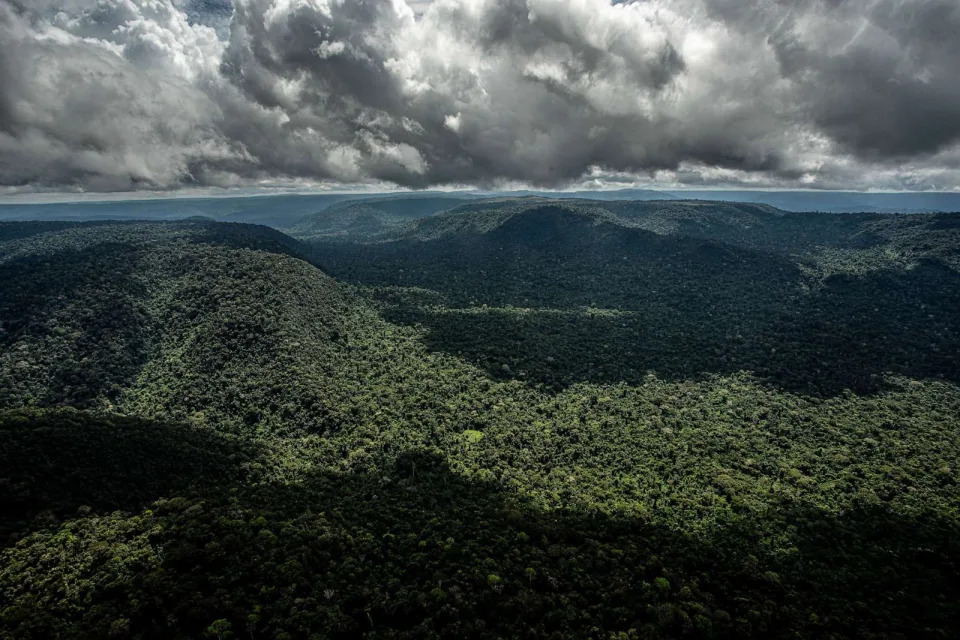Cathie Anderson
Wed, August 23, 2023


Xavier Mascareñas/xmascarenas@sacbee.com
LONG READ
Veronika Honcharuk drives 133 miles one way to get to her job in San Francisco from her home in Placerville. She logs patients’ admission information in the emergency department at UCSF’s Helen Diller Medical Center.
She works 12 hours a shift, three days a week. To clear enough money to cover her parking ($300), gas ($600) and her car payment ($400) each month, she must put in a week and a half at her job.
Honcharuk’s employer frequently offers her the opportunity to work overtime, she said, and she usually takes it because she needs the money.
But if she works those extra hours, she will likely sleep in her car until the next shift rather than making the journey home and back. The drive time would eat up five to six hours.
Step into the world of low-wage workers at the University of California where overtime is a necessity, affordable housing is a super-commute away and cars double as bedrooms. Now, thousands of UC workers are demanding a wage increase that would allow them to alter this reality.
“I’d love to get a new car. It would definitely help to pay my mortgage and to put more money into savings,” Honcharuk said. “There’s not a lot left over once you’ve paid a mortgage and car bill and the phone bill and all these bills. They all add up. You don’t have a lot to put aside for security.”
The UC Board of Regents could better the lives of nearly a quarter of UC employees with pay increases that would equal to 2.5% of its current operating budget — or even less, according to researchers for Honcharuk’s union, AFSCME Local 3299. They make their case for two separate wage proposals in a report being released Wednesday titled “Priced Out: The University of California’s Role in the Affordability Crisis.”
The University of California, responding to a query from The Bee, said it had not yet seen the AFSCME researchers’ report but that its leaders are open to discussing the wage proposals. Outside a recent regents meeting, AFSCME workers shouted their demands for a $25 minimum wage and across-the-board wage increases of 5% for AFSCME members currently earning more than that. The union and the UC will open talks on a new contract in January.
“UC is aware of and has been reviewing the union’s public campaign around $25/5%,” system leaders said in a statement issued by the UC Office of the President. “If that is the economic proposal that AFSCME brings to the bargaining table in January of 2024, the university will seriously consider it, working with AFSCME through the bargaining process to identify economic terms that are fair, competitive, and reflect the varying economic markets across our state. “
Union: Inflation outpaces pay hikes
While inflation has soared by 12% in California since February 2021, the AFSCME researchers said, pay raises haven’t kept up. In 2020, after three years of bargaining on a new contract, AFSCME workers received a 6% across-the-board wage increase and 3% raises in each successive year. Essentially, this translates into a 5% pay cut for these employees, the researchers said.
The UC Office of the President, however, said that wage gains for AFSCME workers have averaged 5% annually over their four-year-contract because they have received not only across-the-board pay hikes but also annual step increases based on job performance.
AFSCME researchers said a third of their members and none of the unrepresented student workers qualify for step increases, and pay increases for these workers pale in comparison to the market-based adjustments that the system has given higher-paid workers.
Average pay for UC chancellors has jumped by 34% since 2021, to the equivalent of $320 per hour, they said, and pay for senior managers rose 12% over a similar time period to $226 per hour.
Even before those salary bumps, the researchers said, these affluent employees were far better-positioned to weather escalating inflation than AFSCME Local 3299’s membership.
Those inflationary pressures jolted Honcharuk, 22, and her husband last year when their landlord told them that the monthly rate on their three-bedroom duplex in Carmichael would jump 24.4% to $2,800.
After discussing it, the couple decided that, rather than paying so much on rent, they should put that money into a home where they could build some equity.
“We thought, if we’re gonna be paying almost $3,000 for rent, we would look for a larger place or like a good place to live so we can still take in our parents who had to move out of the state,” Honcharuk said. “When they come to visit, we want some space for them.”
Honcharuk was born in Carmichael, but she quickly realized that she might not find a home there in her price range of $500,000 or less. The couple toured numerous Sacramento-area homes, but many required extensive repairs, Honcharuk said. By looking farther in a more rural county, she said, they finally found a three-bedroom home in Placerville.
Commute times climb
Since the move in December, Honcharuk said, her commute has taken two to three hours one way, up from the 1.5 hours she spent on the road from Carmichael. Four days of work had covered half the rent in Carmichael. Honcharuk now must work six days to earn half their mortgage payment.
The couple could not have afforded so much space if they lived closer to their jobs in San Francisco. Honcharuk’s husband Mike has been working as a supervisor in the ophthalmology department at a different UCSF medical campus. Both applied for jobs at health care systems in Sacramento but didn’t have any luck.
AFSCME researchers say renters in San Francisco pay a median price of $2,665 for a one-bedroom apartment. For 20% more than that, the Honcharuks acquired their three-bedroom house in El Dorado County.
The median pay for AFSCME service and patient care workers is $29.22 an hour, the researchers said, but federal data show a worker would have to earn $51.05 an hour to cover rent and other living expenses near the UCSF campus. Honcharuk earns about $30 an hour.
In 2017, half of the UC’s service and patient care workers could not afford a one-bedroom rental close to work, the researchers said, and 6% of workers would have spent more than half of their gross income on housing if they had rented a place near work.
Today, the researchers said, those numbers are worse: 70% cannot afford the one-bedroom rental, and 15% would have to devote more than 50% of their gross pay to housing if they lived near their UC job. Looking at pay data for only service workers, the researchers discovered that 95% cannot afford a one-bedroom rental close to work.
Davina Woods is one of those service workers. She is a senior custodian at UCLA and has worked there for 12 years, but she earns less than $25 an hour. She and one of her daughters had split rent on a duplex in Long Beach, just a 30-minute drive from her workplace, but five years ago, the duplex owner sold the place and served them with notice that they had to move.
Mother and daughter ended up moving to a four-bedroom family home in San Bernardino, and together with Woods’ two sons, they pooled their money and took over the mortgage payment from an elderly relative.
“I do what I have to do to make ends meet,” Woods said.
The commute to UCLA from San Bernardino takes an hour and 25 minutes on a good day, Woods said. But she often encounters traffic problems, she said, so she leaves the house at 1:30 p.m. so she can start her shift on time at 5:30 p.m. She gets off work at 2 a.m.
Workers push for bigger pay hikes amid labor shortages
Both Honcharuk and Woods said they are regularly asked to take on extra work because of a shortage of workers. While Honcharuk frequently works overtime, Woods said she has been charged with cleaning more areas in the same amount of time. Woods said she is working injured now, coping with tendinitis as well as carpal tunnel syndrome.
“People retired; people quit. People moved to daytime or from daytime to overnight. They have to take time off with injuries,” Woods said, “and they don’t replace them. The positions are open. So they expect us to do their work and do ours, too, and they call that swing.”
Low-wage and middle-class workers nationally tell employers that their pay doesn’t reflect their value to their organizations, said Robert Bruno, director of the labor studies program at University of Illinois Urbana-Champaign.
For four or five decades prior to the COVID-19 pandemic, workers in middle-income or working-class jobs just didn’t have much leverage to negotiate pay or pay increases, he said, accepting raises barely keeping up with inflation.
The gap in income inequality transformed into a gulf, he said, but after being deemed too essential to stay home, many low-wage workers are demanding employers close this gap.
Eight out of 10 Californians with annual incomes below $40,000 said the availability of well-paying jobs in their region is a problem, according to a survey on “Californians and their Economic Wellbeing” released in November by the Public Policy Institute of California.
In that same poll, more than 70% of all Californians surveyed said the income gap between rich and poor is getting larger and they think the government should do more to address income inequality.
Before AFSCME launched its campaign, another big union — this one representing nearly 100,000 people — launched a campaign in spring 2022 urging municipalities around the state to set a minimum wage of $25 for health care workers. The labor group, known as Service Employees International-United Healthcare Workers West, has won approval of its measure in Los Angeles, Long Beach, Downey, Inglewood and Lynwood.
Sacramento City Council Member Katie Valenzuela also tried to get her colleagues to consider a measure like the one SEIU-UHW had backed in other cities, but she said it was effectively killed in committee — at least for now.
“I introduced it because it was really common-sense legislation,” Valenzuela said. “The data shows that you need to be a two-income household, even at $25 an hour, to potentially afford living in Sacramento County.”
Valenzuela said she hopes Democrats in the California legislature will push through Senate Bill 525, introduced by state Sen. Maria Elena Durazo of Los Angeles, to make SEIU-UHW’s proposed $25 minimum wage for health care workers a statewide requirement.
If SB 525 becomes law, more than 469,000 health care workers would gain an average wage increase of more than $5.74 per hour, about a 30% jump in pay, researchers at the University of California, Berkeley, Labor Center said in an April 2023 report titled “Proposed Health Care Minimum Wage Increase: What It Would Mean For Workers, Patients and Industry.”
“The low wages paid to health care support workers, direct care workers, and health care service workers in California means they struggle to meet their basic needs; these low wages also significantly contribute to the difficulty in maintaining adequate health care staffing across the state,” wrote labor center researchers Enrique Lopezlira and Ken Jacobs. “Staffing shortages impact patient care, leading to increased wait times, longer hospital stays, and inadequate treatment of chronic illnesses.”
The California Hospital Association and other groups have opposed the bill, however, saying it will raise costs by roughly $8 billion annually and cause severe financial distress for hospitals, nursing homes, physician offices and other health care providers.
“The increase in labor costs will require reducing or eliminating health services to balance revenue and expenses,” CHA Vice President Rony Berdugo wrote in a letter to legislative leaders. “In extreme cases, it will mean bankruptcy and outright closure, especially for those hospitals that are already on the financial brink.”
The hospital industry succeeded in getting referendums challenging the ordinances in Los Angeles, Long Beach, and Downey on the ballot, so implementation is on hold until citywide votes can be held.
The California Nurses Association also has opposed the measure, saying that registered nurses already earn significantly more than $25 an hour and this measure could send a signal to employers that its OK to pay them less than their current median salary.
Why AFSCME Local 3299 is taking up the fight at UC
Even if these local and statewide mandates passed, they apply only to state government and its political subdivisions such as cities, counties and special districts. The University of California is a public trust, not a political subdivision, state courts have ruled, so it cannot be compelled to follow state or local minimum wage laws.
The AFSCME researchers also linked low pay to staffing shortages, pointing out that a number of UC executives have noted that hiring has been challenging during and since the COVID-19 pandemic. The UC often has run a cash surplus, UC finance chief Nathan Brostrom told the regents at a meeting in January, largely because job vacancy rates are three times higher than they were before the COVID-19 pandemic.
Jo Mackness, an assistant vice chancellor at UC Berkeley whose portfolio includes oversight of dining and residential halls, told the regents at a meeting of the finance and capital strategies committee in November that Berkeley is finding it “increasingly difficult” to hire at the pay rates offered at that time.
“One of the areas where we save money is we haven’t spent as much money on compensation, largely because we haven’t been able to fill the vacancies across the system,” she said. “That is beginning to emerge as a risk factor for us, as a university, as a system.”
UC leaders, in the statement sent to The Bee, acknowledged that, to recruit and retain workers to AFSCME-represented jobs in several markets, they have had to offer pay above what is required by the contract.
“These adjustments have varied by locations and positions but include market increases for senior custodians and custodians, adding steps to the lead custodian scale, and providing referral and retention bonuses,” according to the UC statement. “In addition to these AFSCME-specific increases, over the last several years, UC has added to the benefits it provides all employees, including providing care and bonding leave and an infertility benefit. The University will continue to review what additional benefits are necessary to retain its employees and maintain a healthy and supported work environment.”
Both Woods and Honcharuk said they’ve watched as colleagues have come and gone, some saying they could make the same money with less of a workload, some retiring and others leaving for jobs that pay more.
Claudia Preparata, the research director for AFSCME Local 3299, said her research on pay explains why: “During the COVID-19 pandemic, our members were the heroes on the front line, like (they) literally were going into work, putting themselves at risk. They did not have the luxury of being able to work remotely. And every day you would hear about frontline heroes. Now ... what the data reinforces is they are literally the ones in the system to be the most left behind and that is very stark.”
5% of UC operating budget covers 62,000 workers’ pay
It is virtually impossible to spend a minute on a UC campus or in a UC hospital without somehow being touched by work done by one of 62,000 people who earn less than $25 an hour.
Like Honcharuk, they check in patients. Like Woods clean hospital rooms, classrooms, lobbies, libraries, offices, operating rooms and many other spaces. They serve food. They weed, mow grass, spread fertilizer, pick up litter. They enforce rules, monitor who comes and goes, patrol the property.
Although the 62,000 represent about 24% of the UC workforce, their combined wages make up 5% of the system’s operating budget, Preparata and senior researchers Geoff Goodman, Owen Li and Kate Spear wrote in their “Priced Out” report.
Li, Preparata and Spear shared highlights from their report during a video conference with The Bee, stressing that their proposals are intended to benefit both unionized workers and undergraduate students. Some of those student workers are trying to earn enough to meet the yearly self-help obligation in their financial aid package, which averages $9,900.
In reviewing demographic information on both the students and AFSCME members, the researchers found that about 80% of each group are people of color.
The UC houses only 38% of its students, so many undergraduates are competing with staff for affordable housing close to UC campuses and hospitals, the researchers said, putting upward pressure on rents. And, they noted that a 2022 UC survey found that 8% of students experienced homelessness, up from 5% in 2016.
Housing, however, is not the only cost weighing heavily on wallets. A 2021 accountability report from the UC found that 44% of students reported being food-insecure.
That same report noted that 35% of UC students received Pell grants, indicating they come from households earning $50,000 or less in income.
Yet, living near a UC campus brings with it higher-than-average prices for basic expenses such as housing, food, taxes and health care, according to Daniel Masterson, a professor in UC Santa Barbara’s Department of Political Science.
He found that the average cost of living in counties with a UC campus is not only 47% higher than the national average but also higher than the average cost of living in other counties with universities — even higher than the top 50 non-UC schools.
The UC has taken steps to help with food pantries, grocery gift cards, meal vouchers, the researchers said, and the California legislature has appropriated millions for emergency meal services, CalFresh enrollment clinics and rapid rehousing.
Pay as a preventative strategy
But pay raises, Li said, could be a preventative strategy. Here are two proposals that he, Spear and Preparata floated in their report and the rationale behind them:
In the first, the researchers argued that the least UC could do is to restore the buying power that its personnel have lost since 2017. Back then, 6% of AFSCME-represented workers would have had to spend more than half their income to get housing near work. By 2022, AFSCME researchers said, calculations showed 15% of workers were in that boat.
If the UC raised the minimum wage for these workers to $25 and gave the remaining AFSCME-represented workers a 5% wage increase, the researchers said, the portion of AFSCME members facing that severe housing burden would fall to 4%.
The pay boost would also allow students to earn enough money to meet their self-help financial obligation, without working as many hours, Spear said.
Right now, she said, about 11% of undergraduates are working more than 20 hours a week, even though research suggests n students work working such hours negatively affects students’ academic progress and performance.
At $25 an hour, student workers could earn an additional $600 a month if they worked 15 hours a week.
If the UC instituted a $25 minimum wage and the recommended 5% wage bumps, Spear and her colleagues said, the system’s operating budget would grow by 0.7%.
In the second wage proposal, AFSCME researchers suggested the UC pay the median hourly wage that it would take to ensure a full-time California worker could afford housing. Known as the statewide housing wage, the figure is $33.84 an hour.
That tops the median hourly wage of $29.22 that UC service and patient care workers are making and the median pay of $16 an hour for students, the researchers said.
This proposal also calls for a 5% wage bump for workers already making above the suggested $33.84 minimum wage.
The statewide median housing wage would have been more than enough to cover rent on a one-bedroom apartment near UC Merced, UC Riverside, UC Davis, and UC Los Angeles, researchers said, and at this pay, no UC worker would have to spend more than half their income to live near work.
If the UC instituted the hourly $33.84 minimum wage, its operating budget would grow by 2.5%, researchers said.
UC officials said that, when evaluating the union’s economic proposals, they would carefully review market data for AFSCME positions by location and prioritize providing fair wages and an equitable and healthy work environment. Any decision will be informed by the university system’s financial constraints and operational needs, they added.
AFSCME links pay to staffing shortages, quality care
AFSCME researchers said they also are anxious to end staffing shortages in the UC’s health systems because of the consequences for both employee well-being and patient care.
The Berkeley Labor Center’s Lopezlira and Jacobs, in their report on SB 525, also saw a connection: “There is ample research linking higher pay, reductions in worker turnover, and improved staffing levels to better quality of care for consumers,” they wrote. “Increasing pay to health care workers can be expected to improve patient outcomes, including shorter hospital stays and lower mortality rates.”
Jacobs and Lopezlira shared results from several studies, including one that found “a 10% increase in the minimum wage significantly improves key quality of care indicators in nursing homes, reducing the number of quality of care health inspection violations by 7.4%, the use of restraints on patients by 3.3%, and age-adjusted patient mortality rates by 3.1%.”
On average, 12.1% of the higher payroll costs from SB 525 would be offset by lower turnover costs, the Berkeley Labor Center investigators wrote, and the proposed wage increases would raise operating costs by about 3%.
Labor and policy experts disagree on the overall economic effect of these wage increases.
Michael Shires of Pepperdine University said these proposed pay increases are part of an inflationary spiral in which wage increases lag or follow rising prices. Other government bodies will face pressure to provide comparable wage increases to employees, and businesses in other will eventually have to follow suit to compete for workers.
“The bottom line is that these proposals will eventually lead to higher prices, wages and taxes,” Shires said.
But University of Illinois’ Bruno said that, while such arguments have been made since the minimum wage was instituted, decades of analysis have shown that raises play a small role in inflation.
“These kinds of concerns about raising wages have … never borne out. At $20 or $25 an hour, you’re really barely in the lower middle class. In some cities, you are able to afford nothing more than a studio apartment.”
Concerns about housing costs loomed large in Honcharuk’s childhood home, she said. When she and her brothers started working, the family no longer qualified for housing assistance, so they all had to pitch in to help pay the rent.
Her parents, she said, long dreamed of buying a home in California but were never able to afford it.
“My mom didn’t work for a while. She took care of our younger siblings. She worked on call as a dental assistant whenever she could,” Honcharuk said. “My parents weren’t able to buy a home until they moved out of the state (last summer). They moved to Missouri where they could afford a home.”















